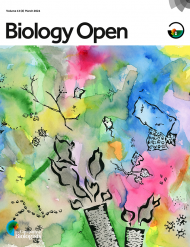Evolution of sensory perception in insects
Michael Perry1, Hua Yan2, Danny Reinberg2 and Claude Desplan1
1NYU, Biology, New York, NY, USA. 2NYU Langone School of Medicine, HHMI, New York, NY, USA
How do changes in cell fate affect the function and performance of neural systems, in particular to adapt visual and olfactory systems to their environment? For example, butterflies have improved color vision compared to other insects such as Drosophila. This is achieved by duplicating the color photoreceptors: each of the two R7s makes a stochastic choice to express the transcription factor Spineless, leading to three stochastic types of ommatidia (Spinelesson/on, Sson/off or Ssoff/off), instead of two in Drosophila (Spinelesson or Ssoff). A CRISPR spineless mutant in butterflies showed that it controls the fate of the ommatidia. Evolution can shape the visual system to adapt it to specific environmental conditions by modifying a more ancestral gene network that determines photoreceptor fate.
The opposite change occurs in the housefly Musca that has improved motion vision at the expense of color vision through changes in cell fate specification. In a region of the male eye that is dedicated to chasing females (‘love spot’), color photoreceptors express the broad-spectrum Rhodopsin normally used in motion vision. They are also rewired to connect to the motion processing centers. I will discuss the molecular basis for this fate transformation.
We also studied how ants depend on their dramatically expanded olfactory system to detect pheromones involved in complex social interactions. We generated a mutant in the orco (odorant co-receptor) gene that renders ants unable to detect pheromones. This disrupted their social interactions and dramatically altered development of their olfactory system.
Therefore, developmental systems can be modified for specific functions and how neural fates in sensory systems are adjusted during development.










You must be logged in to post a comment.